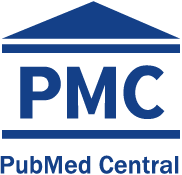Diversidad genómica de Escherichia coli uropatógena en aislados clínicos de seis países de Latinoamérica, 2018-2023
DOI:
https://doi.org/10.17843/rpmesp.2025.422.14299Palabras clave:
Escherichia coli, Uropatógeno, UPEC, Resistencia Bacteriana, Epidemiología MolecularResumen
Objetivo. Caracterizar genéticamente aislados clínicos de Escherichia coli uropatógena (UPEC) provenientes de hospitales en Perú y contextualizarlos frente a 127 genomas adicionales de UPEC reportados en seis países de Latinoamérica entre 2018 y 2023. Materiales y métodos. Se secuenciaron y ensamblaron los genomas de 16 aislados peruanos de UPEC y se complementaron con 127 genomas disponibles en la base de datos pública del NCBI. Se identificaron serotipos, secuenciotipos (ST), genes de resistencia antimicrobiana
(RAM) y mutaciones asociadas a resistencia. Asimismo, se realizó un análisis filogenético para determinar relaciones evolutivas y distribución en filogrupos. Resultados. El clon ST131 fue el más prevalente (42,7%), seguido de ST1193 (13,3%). El filogrupo B2 predominó
ampliamente (83.2%), destacando el serotipo O25:H4. Se identificaron con alta frecuencia los genes de resistencia blaTEM-1, blaCTX-M-15 y blaCTX-M-27, así como mutaciones en gyrA y parC asociadas a resistencia a fluoroquinolonas, especialmente en el clon ST131. Conclusión. Los hallazgos evidencian una alta circulación de clones de UPEC de alto riesgo, como ST131 y ST1193, en Latinoamérica, junto con una notable carga de genes y mutaciones vinculadas a resistencia a múltiples antimicrobianos, lo que resalta la necesidad de fortalecer la vigilancia genómica regional.
Descargas
Referencias
Rodriguez-Angeles M. Principales características y diagnóstico de los grupos patógenos de Escherichia coli. Salud Pública México. 2002; 1;44. doi: 10.1590/S0036-36342002000500011.
Agarwal J, Srivastava S, Singh M. Pathogenomics of uropathogenic Escherichia coli. Indian J Med Microbiol. 2012; 30(2):141–9. doi:
4103/0255-0857.96657.
Spurbeck RR, Dinh PC, Walk ST, Stapleton AE, Hooton TM, Nolan LK, et al. Escherichia coli Isolates That Carry vat, fyuA, chuA, and yfcV Efficiently Colonize the Urinary Tract. Infect Immun. 2012; 80(12):4115–22. doi: 10.1128/IAI.00752-12.
Yang X, Chen H, Zheng Y, Qu S, Wang H, Yi F. Disease burden and longterm trends of urinary tract infections: A worldwide report. Front Public Health. 2022; 10:888205. doi: 10.3389/fpubh.2022.888205.
Whelan S, Lucey B, Finn K. Uropathogenic Escherichia coli (UPEC)-Associated Urinary Tract Infections: The Molecular Basis for
Challenges to Effective Treatment. Microorganisms. 2023; 11(9):2169. doi: 10.3390/microorganisms11092169.
Terlizzi ME, Gribaudo G, Maffei ME. UroPathogenic Escherichia coli (UPEC) Infections: Virulence Factors, Bladder Responses, Antibiotic,
and Non-antibiotic Antimicrobial Strategies. Front Microbiol. 2017; 8:1566. doi: 10.3389/fmicb.2017.01566.
Kot B. Antibiotic Resistance Among Uropathogenic Escherichia coli. Pol J Microbiol. 2019; 68(4):403–15. doi: 10.33073/pjm-2019-048.
Loyola S, Concha-Velasco F, Pino-Dueñas J, Vasquez-Luna N, Juarez P, Llanos C, et al. Antimicrobial Resistance Patterns and Dynamics of Extended-Spectrum β-Lactamase-Producing Uropathogenic Escherichia coli in Cusco, Peru. Antibiotics. 2021; 10(5):485. doi: 10.3390/antibiotics10050485.
Pavez M, Troncoso C, Osses I, Salazar R, Illesca V, Reydet P, et al. High prevalence of CTX-M-1 group in ESBL-producing enterobacteriaceae infection in intensive care units in southern Chile. Braz J Infect Dis Off Publ Braz Soc Infect Dis. 2019; 23(2):102–10. doi: 10.1016/j.bjid.2019.03.002.
Shenagari M, Bakhtiari M, Mojtahedi A, Atrkar Roushan Z. High frequency of mutations in gyrA gene associated with quinolones resistance in uropathogenic Escherichia coli isolates from the north of Iran. Iran J Basic Med Sci. 2018; 21(12):1226–31. doi: 10.22038/ijbms.2018.31285.7539.
Garallah ET, Al-Jubori SS. Molecular detection of glpT and uhpT genes as fosfomycin pathways in UTI infection patients. Gene Rep. 2020; 21:100930. doi: 10.1016/j.genrep.2020.100930.
Lin JC, Kristopher Siu LK, Chang FY, Wang CH. Mutations in the pmrB gene constitute the major mechanism underlying chromosomally encoded colistin resistance in clinical Escherichia coli. J Glob Antimicrob Resist. 2024; 38:275–80. doi: 10.1016/j.jgar.2024.06.013.
Yu L, Li W, Xue M, Li J, Chen X, Ni J, et al. Regulatory Role of the Two-Component System BasSR in the Expression of the EmrD Multidrug Efflux in Escherichia coli. Microb Drug Resist Larchmt N. 2020; 26(10):1163–73. doi: 10.1089/mdr.2019.0412.
Bunduki GK, Heinz E, Phiri VS, Noah P, Feasey N, Musaya J. Virulence factors and antimicrobial resistance of uropathogenic Escherichia coli (UPEC) isolated from urinary tract infections: a systematic review and meta-analysis. BMC Infect Dis. 2021; 21(1):753. doi: 10.1186/s12879-021-06435-7.
Al-Guranie DR, Al-Mayahie SM. Prevalence of E. coli ST131 among Uropathogenic E. coli Isolates from Iraqi Patients in Wasit Province,
Iraq. Int J Microbiol. 2020; 2020:8840561. doi: 10.1155/2020/8840561.
Kudinha T, Johnson JR, Andrew SD, Kong F, Anderson P, Gilbert GL. Escherichia coli Sequence Type 131 as a Prominent Cause of
Antibiotic Resistance among Urinary Escherichia coli Isolates from Reproductive-Age Women. J Clin Microbiol. 2013; 51(10):3270–6.
doi: 10.1128/JCM.01315-13.
Pitout J, Peirano G, Chen L, DeVinney R, Matsumura Y. Escherichia coli ST1193: Following in the Footsteps of E. coli ST131. Antimicrob Agents Chemother. 2022; 66. doi: 10.1128/aac.00511-22.
Marcos-Carbajal P, Salvatierra G, Yareta J, Pino J, Vásquez N, Diaz P, et al. Caracterización microbiológica y molecular de la resistencia
antimicrobiana de Escherichia coli uropatógenas de hospitales públicos peruanos. Rev Peru Med Exp Salud Pública. 2021; 38:119–23. doi:
17843/rpmesp.2021.381.6182.
Alqasim A, Abu Jaffal A, Alyousef A. Prevalence and molecular characteristics of sequence type 131 clone among clinical uropathogenic Escherichia coli isolates in Riyadh, Saudi Arabia. Saudi J Biol Sci. 2020; 27(1):296–302. doi: 10.1016/j.sjbs.2019.09.020.
Whitmer GR, Moorthy G, Arshad M. The pandemic Escherichia coli sequence type 131 strain is acquired even in the absence of antibiotic exposure. PLoS Pathog. 2019; 15(12):e1008162. doi: 10.1371/journal.ppat.1008162.
García-Meniño I, Lumbreras P, Lestón L, Álvarez-Álvarez M, García V, Hammerl JA, et al. Occurrence and Genomic Characterization
of Clone ST1193 Clonotype 14-64 in Uncomplicated Urinary Tract Infections Caused by Escherichia coli in Spain. Microbiol Spectr. 2022;
(3):e0004122. doi: 10.1128/spectrum.00041-22.
Nowrouzian FL, Wold AE, Adlerberth I. Escherichia coli Strains Belonging to Phylogenetic Group B2 Have Superior Capacity to Persist in the Intestinal Microflora of Infants. J Infect Dis. 2005; 191(7):1078–83. doi: 10.1086/427996.
Shahbazi R, Salmanzadeh-Ahrabi S, Aslani MM, Alebouyeh M, Falahi J, Nikbin VS. The genotypic and phenotypic characteristics contributing to high virulence and antibiotics resistance in Escherichia coli O25-B2-ST131 in comparison to non- O25-B2-ST131. BMC Pediatr. 2023; 23(1):59. doi: 10.1186/s12887-023-03866-w.
Rodriguez AOG, Pastor HJB, Villafuerte CAG, Barrón YLM de, Miranda DVHC de, Cunza SS. Clasificación filogenética de Escherichia coli
uropatógena y respuesta inmunometabólica en adultos mayores con infección urinaria en casas de reposo. Arch Med Col. 2019;19(2):238–46.
Ali SA, Al-Dahmoshi HOM. Detection of Efflux Pumps Gene and Relation with Antibiotics Resistance in Uropathogenic Escherichia coli
(UPEC) Isolated from Patients with Cystitis. Iraqi J Sci. 2022; 2388–97. doi: 10.24996/ijs.2022.63.6.7.
Boroumand M, Naghmachi M , Ghatee M A. Detection of Phylogenetic Groups and Drug Resistance Genes of Escherichia coli Causing Urinary Tract Infection in Southwest Iran. Jundishapur J Microbiol. 2021; 14(2):e112547. doi: 10.5812/jjm.112547.
Tchesnokova V, Radey M, Chattopadhyay S, Larson L, Weaver JL, Kisiela D, et al. Pandemic fluoroquinolone resistant Escherichia coli clone ST1193 emerged via simultaneous homologous recombinations in 11 gene loci. Proc Natl Acad Sci. 2019; 116(29):14740–8. doi: 10.1073/pnas.1903002116.
Zakaria AS, Edward EA, Mohamed NM. Genomic Insights into a Colistin-Resistant Uropathogenic Escherichia coli Strain of O23:H4-ST641 Lineage Harboring mcr-1.1 on a Conjugative IncHI2 Plasmid from Egypt. Microorganisms. 2021; 9(4):799. doi: 10.3390/microorganisms9040799.
Descargas
Publicado
Número
Sección
Licencia
Derechos de autor 2025 Francesca Caballero, Anne Martinez-Ventura, Diego Cuicapuza, Alex Fajardo-Loyola, Rosmery Gutierrez-Ajalcriña, Javier Soto-Pastrana, Percy Asmat-Marrufo, Evelyn Barco-Yaipen de Vera, Henry Meza-Fernandez, Mario Chambi-Quispe, Jimena Pino-Dueñas, Nicomedes Laura-Rivas, Alexander Briones-Alejo, Pilar Diaz-Rengifo, Carlos Peralta-Siesquen, Guillermo Salvatierra, Pablo Tsukayama, Pool Marcos-Carbajal

Esta obra está bajo una licencia internacional Creative Commons Atribución 4.0.




























